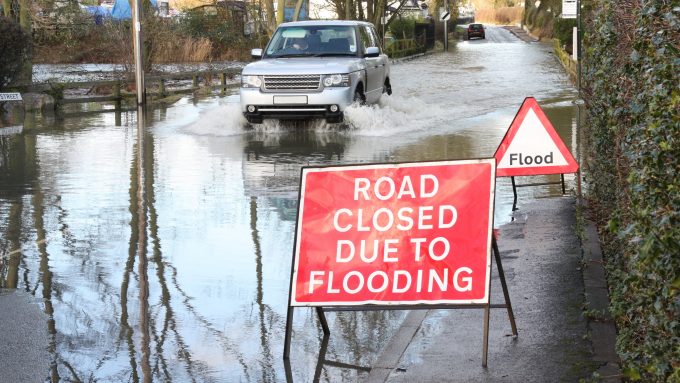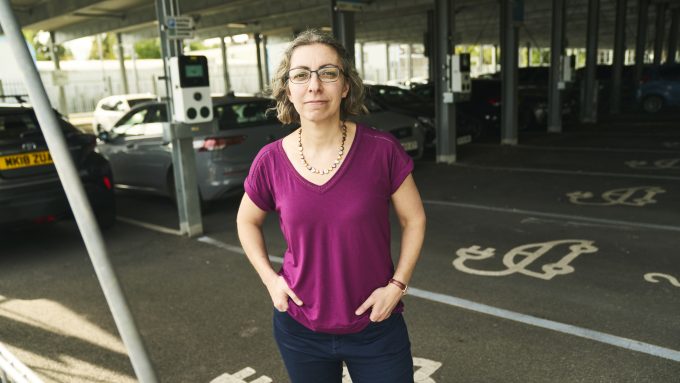
Accelerating multi-modal transport across the UK

Britain’s transport sector could look to Formula One motor racing for inspiration when delivering innovation on large schemes, a session at the Summit heard. “At the end of the season, the car is only 20% of the car when it started,” remarked HS2 Chief Executive, Mark Wild OBE. “It means you get better the more you do things; in every race you evolve.”
Professor Sarah Sharples, the Chief Scientific Adviser at the Department for Transport said stakeholders developing transport innovation must ensure they take advantage of all the research that is already out there. “All too often we reinvent the wheel,” she said.
She spoke about using technology such as computer vision systems to help with bridge inspections or monitoring the movement of people around concourses.
“Making sure we are all working together on that endeavour, using that data and learning from each other about the best way to manage those vast data sets we are collecting is a really good example of where we could be working together more.”Professor Sarah Sharples, the Chief Scientific Adviser at the Department for Transport
Overcoming barriers to collaboration
Session chair Becky Wood, a Non-Executive Director at Connected Places Catapult asked the panel what the barriers might be to increased collaboration.
“The concern I have is around the level of skills and having enough people in the sector to support our ambitions,” said Dr Michèle Dix CBE, a Commissioner at the National Infrastructure Commission (now part of the National Infrastructure & Service Transformation Authority).
“Half a million engineers are missing,” added Mark Wild. “We are the country that invented the Industrial Revolution, but our pipeline of engineers is no-where near strong enough.”
He also spoke of the need for the economy to lift itself clear of boom / bust economic cycles and for the sector to “build a continuous pipeline of learning”.

Increasing passenger numbers
The panel also considered how the passenger experience and how often services run can help encourage more people to embrace public transport.
“My 90-year-old aunt living in a pit village in County Durham has two buses a day,” remarked Mark Wild. “The way forward with any multi-modal connectivity is to increase frequency and reduce friction for people getting on board. Frequency is freedom.”
He added that Melbourne – where he ran the city’s public transport – has a reputation as the most liveable city in the world, “and central for Melbourne was a strategic plan for trams, trains and buses. All the routes were ironed out, and connectivity between modes thought out. Transport connectivity was central.”
He recognised that services in central business districts are going to be very different to those in inter-urban areas, “but fundability, people need to be sure the bus is going to turn up”.
Professor Sarah Sharples added: “I’d be interested in hearing views on how we balance frequency with cost effectiveness, reliability and predictability.
“It’s easy to look at the fantastic work that has happened in London; thinking how that transfers to either smaller towns and cities or rural locations is interesting. Colleagues in the Department are thinking about this relationship between frequency and reliability and predictability of service.”Professor Sarah Sharples, the Chief Scientific Officer at the Department for Transport
Linking transport to housing
Becky Wood asked the panel for their thoughts on what would be game-changing in terms of achieving a multi-modal vision for integrated transport.
Michèle Dix called for “a multi-modal strategy that covers everything; not just transport but links to other infrastructure needs, particularly housing and industry needs”.
She added that it is very important to have a strategy and investment plan in place, plus a “pipeline of projects that have been robustly developed, costed and scoped in order to deliver what is reflected in the strategy”.
The Commissioner also said that multi-modal transport strategies must account for private vehicle use. “There are reasons why people stay in a car” and sometimes it is “more sensible” to drive if no-one else wants to go in the same direction, she pointed out. “Public transport is not the only solution: there are instances where private transport is the solution – so long as we can make it clean.”
Mark Wild reflected on how major transport projects like the Elizabeth Line in London have helped catalyse growth, and said innovation on large schemes is as much about “working cleverly in partnership” with other stakeholders before a project opens.
Sarah Sharples added there is a need to extract learnings from large schemes and apply them across the transport sector. “We have got an opportunity to sell the transport sector as a place to innovate,” she said, “and need to encourage people developing innovations to apply them in other contexts within our transport system to deliver economic value.”
To watch a wrap-up video summarising this year's Connected Places Summit click here. To watch the full video of the discussion on demand, see below.





